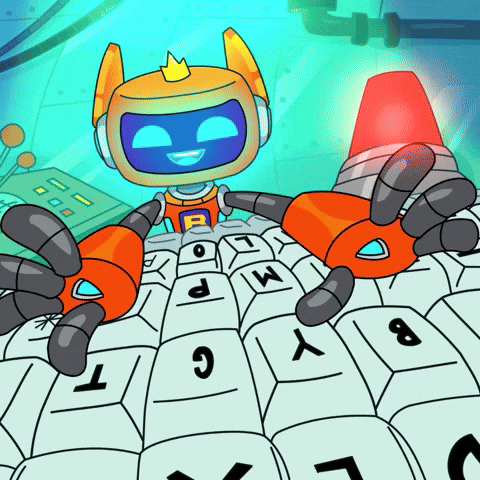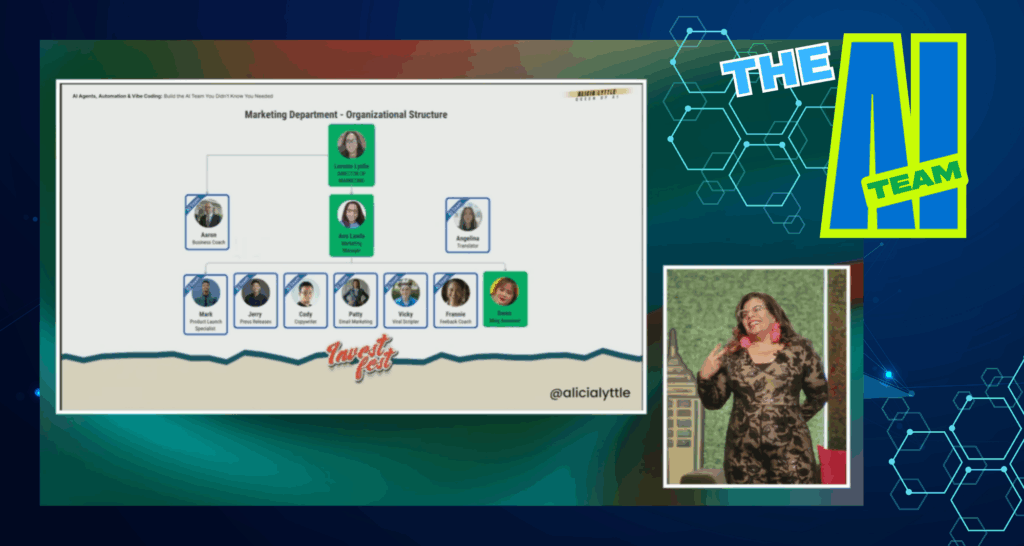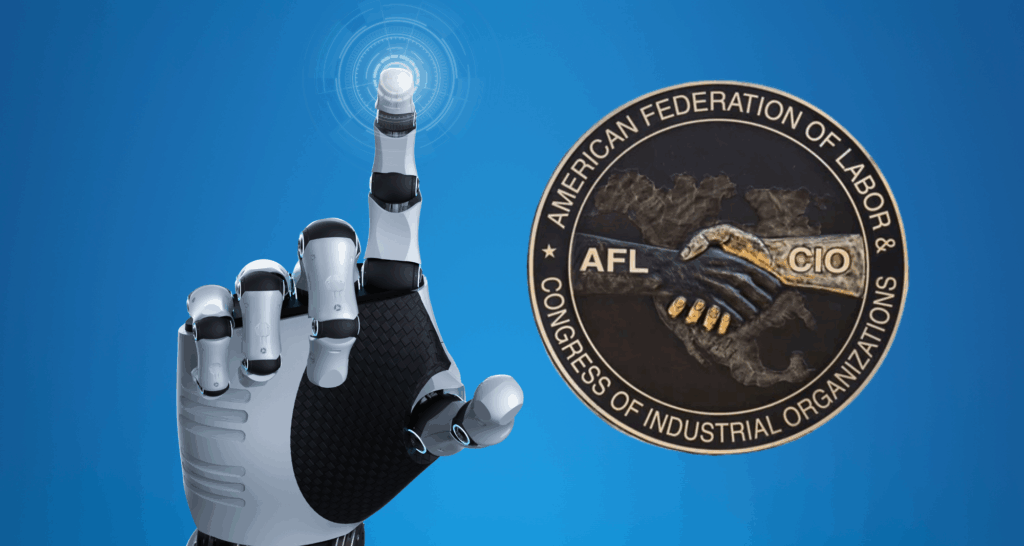How to Build an AI Team That Transforms Business Capacity
When you build an AI team designed to extend human judgment rather than automate tasks, you unlock new levels of growth without adding more overhead.
Every organization operates within limits. Time, staffing, budget, and decision-making bandwidth all shape what’s possible. These boundaries affect how quickly you respond to the market, how much content you produce, how well you serve customers, and how you compete.
Most companies try to overcome these limits by scaling resources. Support demands often lead to new hires. Expanding content calls for additional writers. Growing research needs bring in more analysts. Each solution adds cost, complexity, and risk. Over time, the model becomes harder to sustain.
Strategic AI integration offers a better path. The goal is not to replace people. It is to extend their reach. When you build an AI team focused on roles rather than tasks, and on judgment rather than execution, you create systems that scale capability without scaling cost.
This framework was shared live by Alicia Lyttle, our CEO, at Invest Fest 2025, where thousands of entrepreneurs saw firsthand how operational transformation becomes practical, immediate, and measurable.
To make AI a true advantage, it must be implemented with intention. The way you apply these principles determines whether AI becomes a source of strategic growth or an expensive misstep.
For organizations ready to move beyond automation and into scalable impact, the first step is clear: build an AI team that’s designed to think, not just execute.
Virtual Assistance Beyond Task Automation
Many people still underestimate what AI agents can do today. They often picture chatbots that answer questions or text-generating tools. But the reality goes much deeper.
With agent mode, available through a $20 monthly ChatGPT subscription, AI can now handle multi-step processes across real systems. It applies contextual judgment, completes transactions, and executes tasks with precision.
Take appointment scheduling as an example. Instead of manually checking an email reminder, opening a calendar, visiting a booking site, and filling out forms, the AI agent handles everything. It scans the email, extracts the details, accesses the booking system, and schedules the appointment based on your preferences. If the instruction says “not this Monday,” the agent interprets it as the following week, recognizes the pet as an existing client, and selects a time that fits your calendar.
Calendar management shows similar intelligence. A request like “schedule learning time this week, one hour daily” prompts the agent to scan your commitments, find ideal windows, and create recurring blocks.These actions rely on what we call judgment parameters. The system recognizes that scheduling focus time 15 minutes before a major presentation isn’t ideal, even if the slot is technically available. It also accounts for meeting density, energy levels, and workflow logic that basic automation overlooks.
Travel booking takes this even further. The agent logs into airline accounts, compares flights based on your preferences, completes the reservation process, and stops only at the payment step. It moves faster than a human while staying accurate and aligned with your needs.
All of these examples share the same foundation. The agent works inside your actual accounts, uses real data, makes contextual decisions, and completes full processes. This is what defines an effective AI team member. It doesn’t just follow instructions. It executes autonomously within clear boundaries.
Voice Training Beyond Generic Generation
AI-generated content often reveals itself through tone and phrasing that feel synthetic. Openings like “Ladies and gentlemen, esteemed colleagues” signal generic output that weakens credibility instead of building it.
This happens because untrained AI relies on broad patterns from massive datasets. It doesn’t understand your unique communication style. The solution isn’t to avoid AI for writing. It’s to train it to match your voice so closely that the output feels like you wrote it yourself.
Effective voice training follows three clear steps.
Step 1: Establish Voice Context
Start by sharing your biography and real examples of how you communicate—transcripts, articles, presentations, or emails that reflect your natural style.
Give the AI a clear instruction:
“Write as my ghostwriter. Learn my tone and rhythm so you can write as me.”
This isn’t about copying sentences. It’s about learning how you open, transition, and close. It’s about understanding your word choice, pacing, and personality.
Step 2: Extract Pattern Recognition
Ask the AI to describe what it learned. Let it identify your recurring phrases, preferred transitions, and signature tone. It might notice that you open with casual phrases like “Hey, hey” instead of formal greetings. It may highlight your use of conversational transitions, such as “But hold up,” or your consistent energy and teaching rhythm. These patterns shape your voice, even if you don’t consciously notice them.
Step 3: Validate Through Comparison
Test the training by requesting the same content twice. Once without voice training, once with it. The difference will be clear.
Untrained output might sound like:
“Ladies and gentlemen, today I stand before you to discuss artificial intelligence’s transformative potential…”
Trained output might read:
“Hey, hey. You know, diving into AI in the workplace is like opening a door to a room full of gadgets you never knew you needed…”
The second version sounds like you. It’s fast, authentic, and aligned with your tone. It also passes AI detection tools because it reflects real collaboration, your direction, your voice, and AI’s execution.
Once trained, your AI ghostwriter can support every content need: books, social posts, email sequences, course materials, sales copy, and thought leadership. It writes at the speed of strategic thinking while staying true to the voice that builds trust and connection.
Content Transformation at Scale

Valuable content already exists across your business. It just needs to be unlocked. Podcast interviews often contain book-worthy insights. Webinar recordings contain course material hidden within the presentation slides. Workshop transcripts include frameworks that could become lead magnets or strategic guides.
The challenge is extraction and restructuring. Turning raw content into usable formats usually takes weeks of writing, editing, and refinement. Time most teams can’t afford to spend consistently.
Claude AI changes that. With the right instructions, it transforms content at speeds that collapse traditional timelines.
Upload a podcast transcript and specify the structure:
“Turn this interview into a high-quality ebook of at least 150 pages. Keep the authentic voice and organize the content into clear chapters with actionable insights.”
The system analyzes the conversation, identifies key themes, extracts core ideas, and rebuilds the material into a book format. This isn’t just a cleaned-up transcript. It’s a full transformation that preserves your voice while creating a structure suited for long-form reading.
One real example produced a 210-page book from a single podcast interview. In just fourteen minutes. That content became a lead magnet, fueling business development without the long manuscript process that would normally take weeks or months.
The opportunity goes far beyond one conversion. Every podcast, presentation, and workshop you create becomes raw material for books, course modules, content libraries, and digital assets. The constraint shifts from production capacity to strategic prioritization. It’s no longer about whether you can transform content. It’s about choosing what to transform first.
Organizational Architecture: Designing Role-Based Integration
AI tools often fail to deliver lasting value when they sit outside the workflow. If people have to remember to use them, adoption stays inconsistent. Real impact comes when AI is treated as part of the team with defined roles, clear responsibilities, and built-in collaboration.
At AI InnoVision, our organizational chart includes both human and AI team members. Each agent is assigned a specific role and integrated directly into our operations. They have a professional identity, complete with a name and visual representation. Their responsibilities are documented through job descriptions and performance expectations. And their contributions are mapped into existing processes to ensure consistent collaboration across the team.
Meet the AI Team: Integrated Roles in Action
Franny: Feedback Coach
Franny reviews consultant presentations from our AI Certification Program. She provides detailed analysis covering strengths, areas for improvement, grading, and rationale. Before Franny, this process took about 66 hours per quarter of leadership time. An estimated $231,000 in opportunity cost at standard consulting rates. Now, feedback is delivered within hours instead of days. Quality stays consistent, and leadership time is redirected toward client development and strategic planning. The return on investment isn’t just time saved. It’s the removal of bottlenecks that once limited program scale. We can now support more consultants without increasing leadership workload.
Angelina: Multilingual Translator
Angelina is an interactive AI avatar built through HeyGen. She speaks over thirty languages and provides real-time translation during training sessions for international audiences and multilingual government teams. This capability replaced the need for human translators, pre-recorded content, or limited market access. We now serve Dutch-speaking organizations, Spanish-language audiences, and diverse government teams without the coordination challenges or added cost.
Cody: Strategic Copywriter
Cody generates sales copy by blending multiple strategic frameworks. In one demonstration, Cody wrote in the style of Myron Golden, then in the style of Alex Hormozi, and facilitated a simulated critique between the two. The final output combined insights from both while staying true to our brand voice. Cody doesn’t just write quickly. He produces high-impact copy that reflects a trained voice and strategic depth.
These AI team members are infrastructure.
When someone says “Send this to Franny for review” or “Have Cody draft the first version,” they’re delegating to a trusted colleague, not just using a tool.
That distinction matters. It drives consistent adoption, deeper integration, and greater strategic value from every AI capability.
Build an AI Team: Implementation Framework
The demonstrations shared throughout this guide use platforms most businesses already have or can access immediately. The difference between teams that transform operations and those that remain capacity-constrained isn’t access to tools. It’s a strategic implementation.
Step 1: Identify High-Leverage Roles
Start by mapping where time investment outweighs strategic value. Not every task needs automation, but many consume disproportionate resources compared to their business impact.
Strong candidates for AI team roles include:
- Calendar and meeting coordination
- Email triage and initial response drafting
- Content review and feedback provision
- Social media scheduling and optimization
- Initial customer inquiry handling
- Presentation quality evaluation
- Research synthesis and summary generation
These tasks share a common thread: they follow repeatable patterns where consistency matters more than creativity, and where current bottlenecks limit scale.
Step 2: Design Role Architecture
For your first AI team member, define the role with clarity. Treat this process like hiring a human employee. Instead of asking what the agent should do, focus on shaping the role with precision:
- Define the types of decisions the agent should support
- Set clear quality standards for the output
- Align tone and communication style with your brand voice
- Identify where human review or confirmation is still required
- Map how this role integrates into your existing workflow
Clear job descriptions, defined responsibilities, and explicit performance expectations lead to stronger results than casual experimentation.
Step 3: Build and Configure
Visit chatgpt.com/gpts/editor to create custom GPTs that act as team members. If the setup feels unclear, ask ChatGPT to guide you through strategic questions about the role.
Provide training materials: sample outputs, voice guidelines, decision frameworks, and brand standards. The depth of your initial investment determines long-term performance. Thorough training leads to consistency. Minimal training leads to frustration.
Step 4: Establish Identity
Give your AI team member a name. Choose a professional photo. Write a short resume or role summary. These elements shift perception from “using a tool” to “collaborating with a colleague.”
This matters more than it seems. When someone says, “Ask Marcus to review this strategy” instead of “I should probably check this with AI,” adoption becomes natural rather than optional.
Step 5: Measure and Expand
Track time saved, quality improvements, and capacity gains. Once your first AI team member proves value through measurable outcomes, the framework becomes repeatable.
Each new addition builds on the last. By the time you onboard your third AI team member, your organization will have developed collaboration literacy and integration patterns that multiply impact.
Advanced Capabilities: Voice Partnership and Expertise Cloning
AI collaboration isn’t limited to written output. With advanced voice mode, ChatGPT becomes a real-time thinking partner. One that helps shape ideas while generating content.
Using the Spruce voice, for example, you can create a persona like “Tyrone,” an always-available interview partner who asks thoughtful questions, keeps the conversation flowing, and helps surface insights from your expertise.
Setting this up takes just a few minutes:
- Open ChatGPT settings
- Navigate to General, then Voice
- Select Spruce or another preferred voice
- Start the conversation with a role instruction like: “Interview me about [topic], asking questions that pull out valuable insights”
The resulting dialogue becomes podcast material, YouTube content, blog posts, and social media excerpts. Record the audio, transcribe the conversation, use Claude to restructure the format, and publish across platforms. All from a fifteen-minute exchange.
For entrepreneurs who feel blocked by the lack of a podcast partner or don’t know where to start, this removes the barrier. Your AI team now includes a conversational collaborator that’s ready on demand.
Scaling Expertise Through Cloning
Beyond voice collaboration, AI can replicate your expertise for business functions that don’t require your direct presence. Train an AI representation on your knowledge, communication style, and strategic frameworks, then deploy it for routine but meaningful touchpoints.
Real-world use includes orientation calls, initial consultations, responses to frequently asked questions, and ongoing audience engagement. Participants interact with a trained AI that reflects your approach, while you stay focused on high-leverage work.
The model expands further when you create “Ask [Your Name]” domains—spaces where clients, prospects, or community members access your expertise asynchronously. This scales your knowledge without scaling your time, opening new revenue streams and service delivery models.
Building Custom Tools Without Technical Barriers
Software development has traditionally required technical expertise, developer hiring, or significant capital investment. For many businesses, that meant delaying custom tools or settling for off-the-shelf solutions that didn’t quite fit.
Now, platforms like Lovable change the equation. These vibe coding systems use natural language interfaces to build sophisticated applications without requiring technical skills. But while the technology is accessible, the real constraint has shifted.
It’s no longer about whether you can build. It’s about whether you can describe what you need. Most non-technical founders struggle to articulate requirements with enough clarity for effective development. That’s where AI becomes a strategic partner.
Instead of starting from scratch, ask ChatGPT to create a design document for your intended software. This structured specification, which traditional developers might charge between $3,000 and $5,000 to produce, becomes the foundation that vibe coding platforms need to build effectively.
Once your design document is ready, paste it into Lovable.ai and watch the application take shape in real time.
From Strategy to Action
The shift from technical dependency to strategic empowerment marks a turning point in how organizations operate. Across sectors. From government agencies to emerging ventures. We’ve seen a consistent pattern: teams that apply AI with clarity outperform those that treat it as a casual experiment.
This approach expands capacity without increasing overhead. When AI is embedded into workflows through well-defined roles and trained with real context, it becomes part of the infrastructure.
The examples in this guide reflect real implementations using platforms most teams already access. Success depends not on having the latest tools but on how clearly the role is defined, how well the system is trained, and how consistently it is integrated.
If you’ve recognized capacity constraints or strategic bottlenecks in your own operations, the next step is simple. Choose one role. Define it. Train it. Integrate it. Measure the impact. Then expand with confidence.
AI InnoVision supports this journey through targeted training, strategic consulting, and proven systems. Whether you’re building your first AI team member or scaling across departments, we help turn possibility into performance.
The future of work belongs to organizations that delegate repeatable processes to AI and focus human expertise on innovation, relationships, and vision. Those who embrace this model lead transformation and shape the market.




